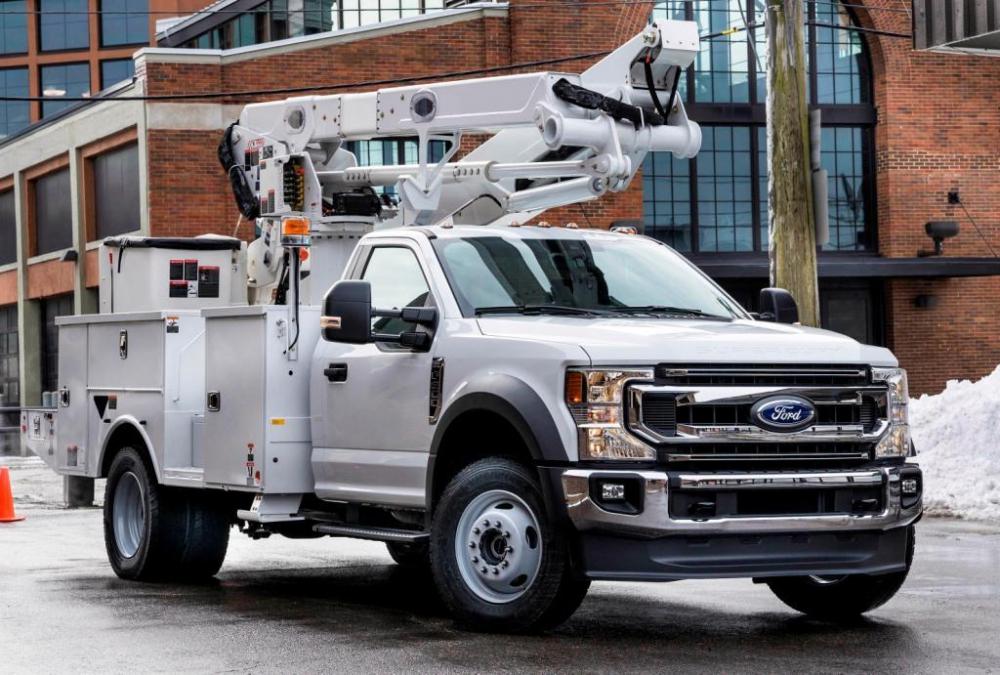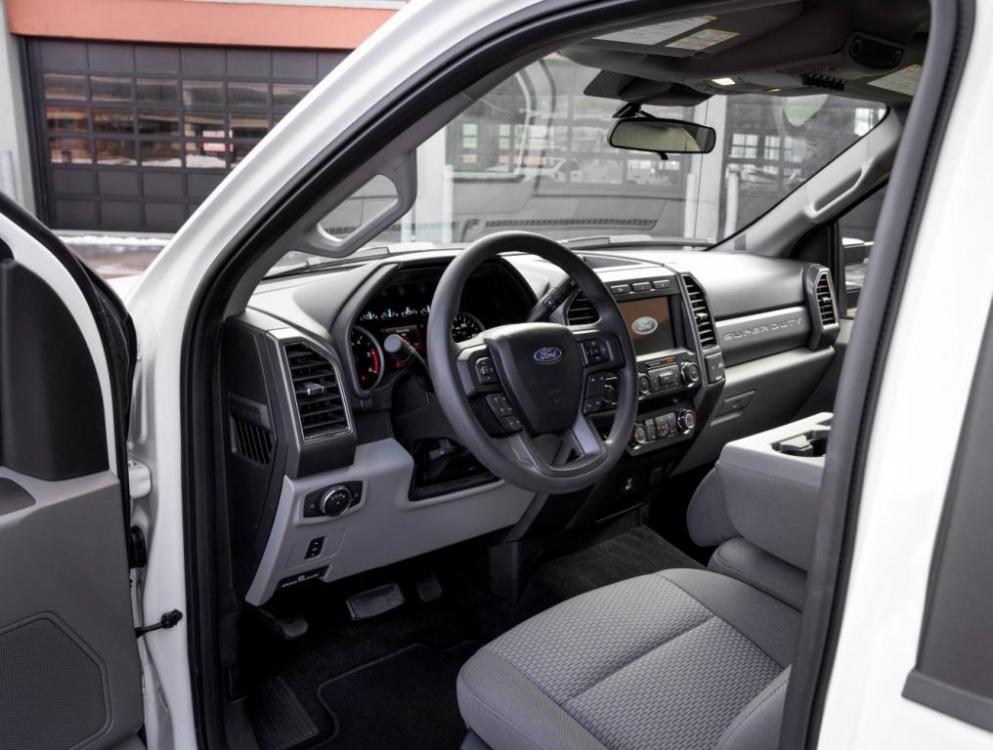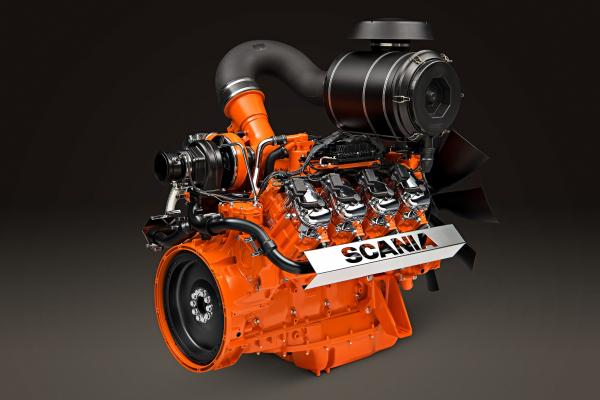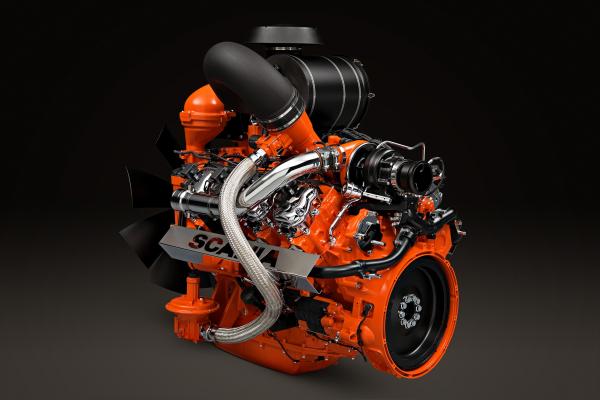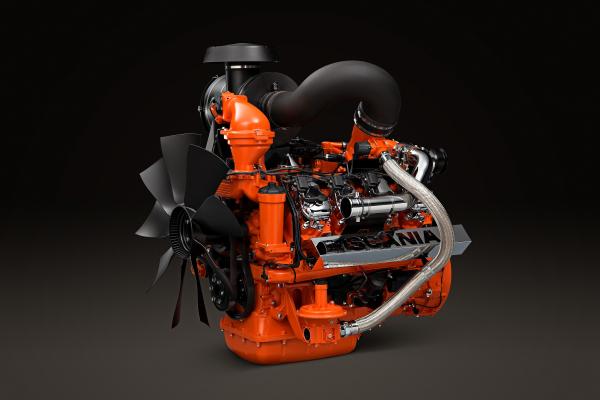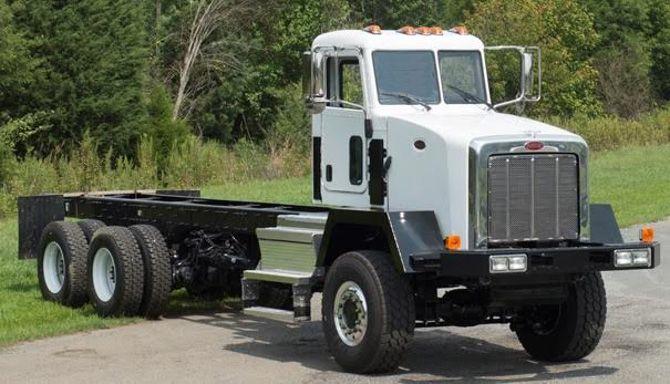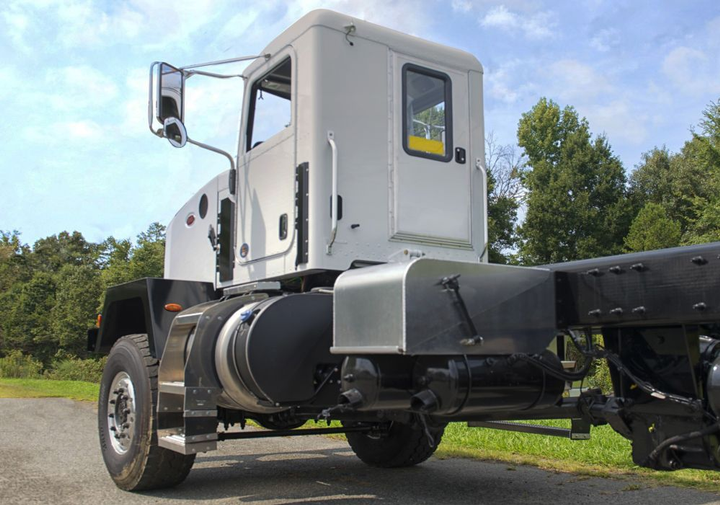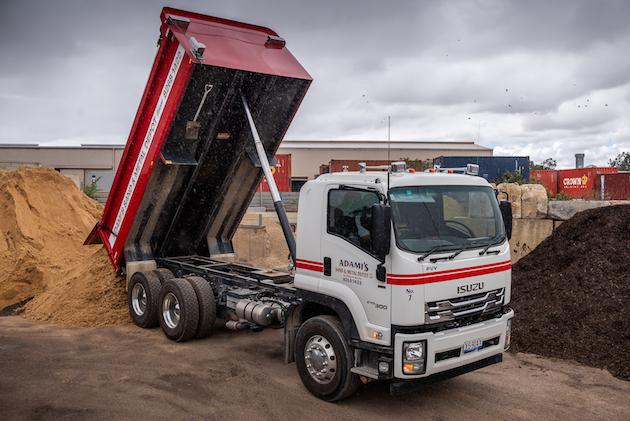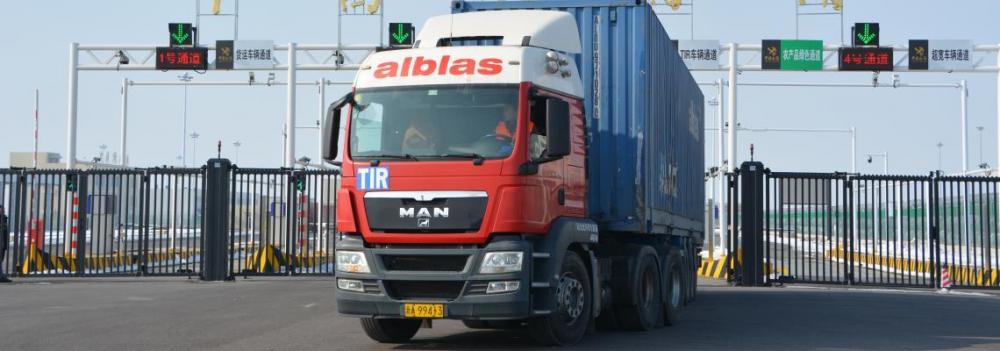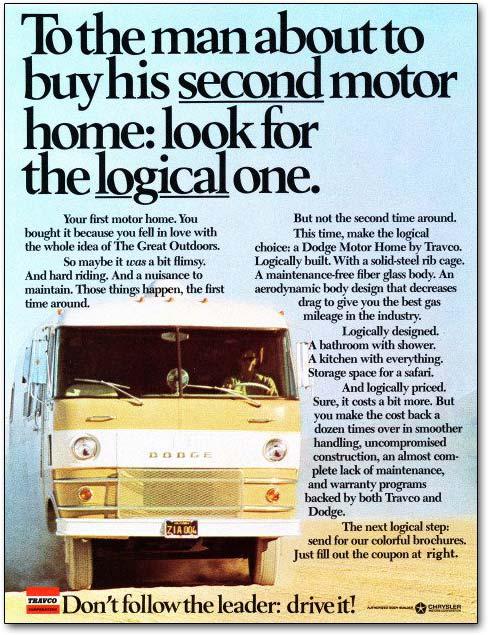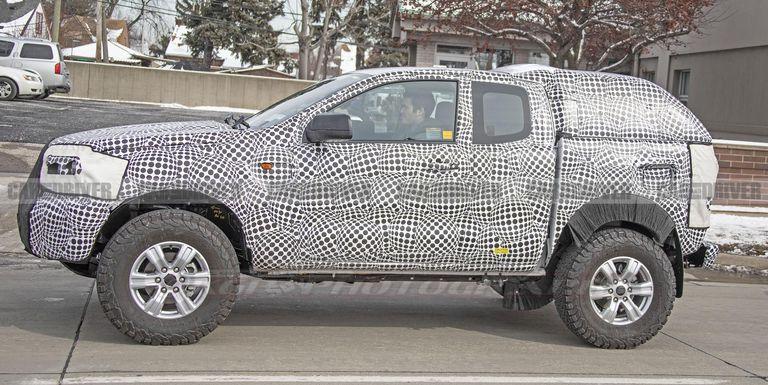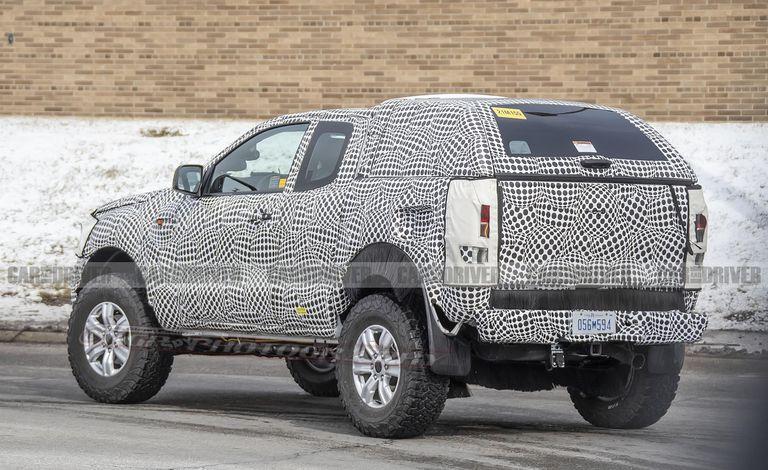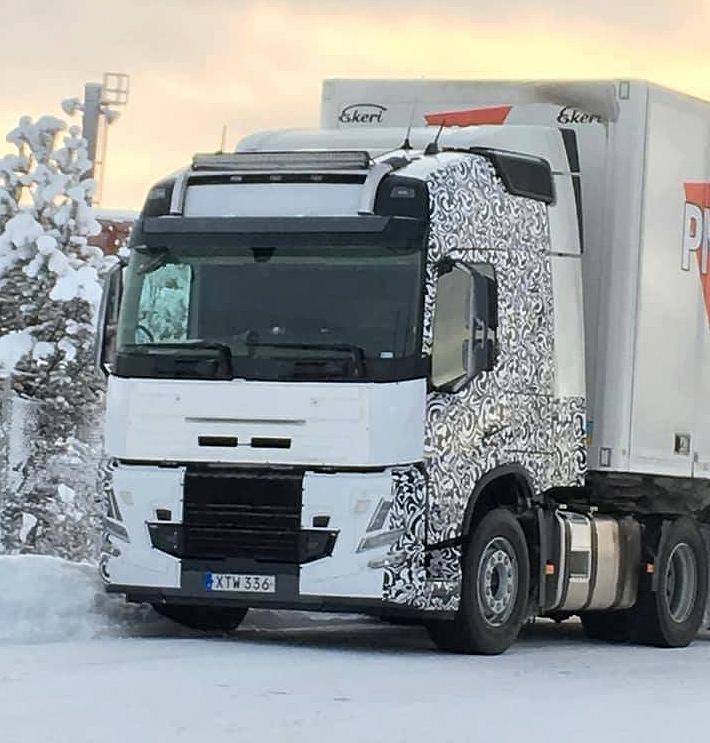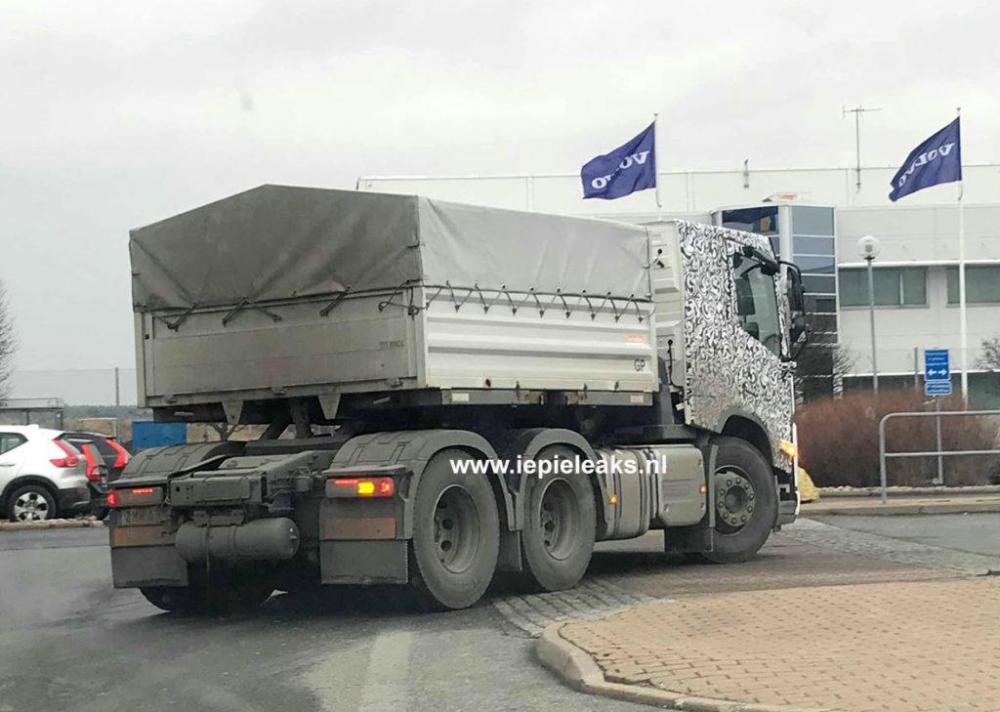
kscarbel2
Moderator-
Posts
18,855 -
Joined
-
Days Won
114
Content Type
Profiles
Forums
Gallery
Events
Blogs
BMT Wiki
Collections
Store
Everything posted by kscarbel2
-
Ford expands F-series lineup with first new nameplate in more than 20 years Michael Martinez, Automotive News / March 5, 2019 The F-series line of pickups is Ford Motor Co.'s undisputed golden goose. And the nest is about to get bigger. For the first time since it created the Super Duty brand of heavy-duty pickups for the 1999 model year, Ford next year is adding a nameplate to the venerable line: the F-600. The 2020 F-600 Super Duty, available in the middle of next year, will slot between the F-550 Super Duty and the F-650 medium truck. It's meant to offer commercial businesses more power in roughly the same package as the F-550. Mike Pruitt, Ford's Super Duty chief engineer, said the F-600 "hits a sweet spot" in the commercial pickup business. "It's the right size to deliver the capabilities of a Class 6 truck ... in that familiar Class 5 Super Duty package," he said. "Customers no longer have to choose between a truck that doesn't have enough payload or a truck that's too big." The F-600 will have a gross vehicle weight rating of 22,000 pounds, which is roughly equal to the F-650. Ford did not release any power or capability figures. The chassis-cab configuration will come with three engine options: a new 7.3-liter V-8 gasoline engine, the third-generation 6.7-liter Power Stroke V-8 diesel or a 6.2-liter V-8 gasoline engine. All come with a 10-speed automatic transmission. The 7.3-liter engine is expected to be the most powerful gasoline V-8 in its class, Ford says. The F-600 arrives as Ford freshens the rest of its Super Duty lineup for the 2020 model year. On a larger scale, the automaker is shifting 90 percent of its capital allocation to producing pickups, vans and utilities. By 2020, roughly 75 percent of its lineup will be updated or new. Other commercial updates Ford also said Tuesday that it's updating its F-650 and F-750 medium trucks for the 2021 model year. The vehicles, on sale in January 2020, will feature an updated instrument panel, a new steering column, Bluetooth functionality and multiple USB ports. Customers can pick between the new 7.3-liter gasoline engine and 6.7-liter Power Stroke V-8 diesel. Ford says it is the only automaker to offer a gas or diesel option on its Class 6 and 7 trucks. Ford also is freshening its E-series vans. Even after it replaced the nameplate with the Transit, Ford continued to produce cutaway and stripped-chassis E-series variants for uses such as shuttle buses, ambulances and small recreational vehicles. The E series will get a similar interior freshening as the F-650 and F-750. It will have an updated upfitter interface module for easier installation of custom equipment. Ford also will update its F-53 and F-59 stripped-chassis vehicles. Ford Press Release - https://media.ford.com/content/fordmedia/fna/us/en/news/2019/03/05/updated-ford-commercial-vehicle-lineup.html .
-
Scania Group Press Release / March 4, 2019 A new gas engine developed by Scania for power generation can use a completely natural, sustainable and renewable fuel source – your waste. The most cost-efficient and sustainable production comes from a mixture of gases created by the breakdown of organic matters in liquid waste, sewage sludge and food waste. With up to 90 percent reduction in C02 emissions, better air quality with less particle emissions and lower operating costs than the equivalent amount of diesel, the sustainability aspects of biogas are also important, and impressive. Increased interest in gas engines “This new gas engine is ahead of the curve. We hear more and more from our customers that they are interested in this type of engine and in renewable fuel sources. We are starting to see an increased interest in gas engines across the world, especially in Brazil and Russia,” says Hans Petersson, Global Product Manager Power Generation, Scania Engines. The Scania V8 16-litre gas engine will run on biogas for power generation purposes. It features output ranges from 320 kW for continuous operating power and can be switched between 1,500 / 1,800 r/min at 360 kW for prime power. Another step towards sustainability “This engine is another step towards meeting Scania´s sustainability goals. While customer demand for biogas engines hasn’t fully taken off yet, our customers will learn more about the benefits of this type of engine and in the meantime, we will continue to refine it; perhaps in collaboration with some key customers,” says Petersson. He believes that early adopters of the biogas engine will include customers who are looking for power generation and who have agricultural or municipal waste in their industries. As a result they will obtain “biogas for free, so they can create their own power.” Read more about the new gas engine at scania.com/mee .
-
Facing lawsuit, New England Motor Freight agrees to increase severance package for employees Jon Harris, The Morning Call / March 4, 2019 New England Motor Freight, the less-than-truckload carrier that abruptly filed for bankruptcy and began shuttering its terminals last month, has agreed to boost the severance package for its full-time employees. The package for 2,500 workers, approved Friday, provides up to an additional $2.7 million, a roughly 20 percent increase from the original proposal, according to Chuck Ercole, a partner at Klehr Harrison Harvey Branzburg LLP in Philadelphia and one of the attorneys representing the employees. The settlement allows each full-time employee, union and nonunion, to get eight weeks of fully paid health care benefits and at least 14½ days of pay — up to five weeks pay if the workers had more than two weeks of unused vacation and time off, Ercole said in an email Sunday. The larger severance package comes about two weeks after employees filed a class-action complaint against New England Motor Freight, claiming the Elizabeth, N.J., firm did not provide them with proper notice under the federal WARN Act. The law requires employers to provide workers with 60 days notice ahead of a closing or mass layoff, but hundreds of the company’s employees reported getting an informal heads-up only days before working their last shift. That included about 200 employees at the company’s longtime terminal in Mahoning Township, Carbon County, along with 150 workers at a terminal in Cumberland County and another 100 at a Westmoreland County terminal, according to notices filed with the state Feb. 14 — a day before the closures began. That lack of notice was at the forefront of the case brought by Klehr Harrison Harvey Branzburg, which was retained by more than 500 of New England Motor Freight’s drivers, dockworkers, warehouse workers and clerical staff. While the employees’ complaint sought eight weeks pay, the case could have dragged on for years. New England Motor Freight, meanwhile, claimed in its notice to the state that the WARN Act did not apply because the company was a “debtor in possession in liquidation under the bankruptcy laws.” “It is a good result under difficult circumstances,” Ercole said. “Employees get money now and continued health benefits instead of waiting perhaps for years with no guarantee of success and/or whether there would be funds to pay for a larger victory.” With the additional severance funds, the employees’ counsel is in line for up to $300,000 in court-approved attorney’s fees, according to the settlement. New England Motor Freight, which has not returned calls from The Morning Call since its bankruptcy filing Feb. 11, provided less-than-truckload carrier services in the United States and Canada. As the term suggests, less-than-truckload services are geared toward small loads of freight, with a company such as New England Motor Freight combining the loads of several clients on its trucks to provide more cost-effective shipping. The company had about 40 terminals throughout the Northeast, Midwest and Puerto Rico. New England Motor Freight operated the Carbon County terminal for more than 30 years, ever since buying the assets of International Distribution Centers — formerly Interstate Dress Carriers — out of bankruptcy in September 1986.
-
Heavy Duty Trucking (HDT) / March 4, 2019 Fontaine Modification Company developed a narrow cab for Peterbilt trucks to help fleets improve maneuverability and efficiency when hauling special loads. The narrow cab option provides a unique method for hauling utility poles and steel to off-road sites. Utility companies and steel haulers often need to carry large items, like utility poles, to locations where tractor and trailers have trouble going. Because the cab width limits the amount of product that may be hauled on either side of the cab, fleets have typically had to use trucks that have been crudely modified, or they run over-width trucks which require permitting each time they haul a wide load. When presented with this problem, Fontaine worked with equipment manufacturers and a utility company to develop a solution. “We narrowed the cab of a Peterbilt 365 6x6 truck by 18.5 inches, taking it from 72.5 inches wide down to 54 inches wide,” says Dan Jaynes, VP of Product Development for Fontaine. “This modification creates more space to transport poles or steel on both sides of the cab, while meeting legal requirements.” One of the most important aspects of the modification was Fontaine’s ability to narrow the cab while maintaining the factory aesthetics particularly in the interior driver environment. The design also provides a unique door in the back of the cab that allows the driver to exit the cab when cargo is loaded on the sides. The narrow cab was designed in Fontaine’s Charlotte Product Development Center. .
-
Matt Cole, Commercial Carrier Journal (CCJ) / March 4, 2019 A number of recalls have recently been announced by Daimler Trucks North America, Paccar, Volvo, Mack and Great Dane, which include thousands of trucks and other equipment, according to documents from the National Highway Traffic Safety Administration. The recalls from Paccar, Volvo and Mack all stem from issues on trucks equipped with automated manual transmissions. In the affected trucks, an internal component in the clutch assembly could fail, possibly resulting in unintended vehicle movement. The recall population was determined based on part number. Eaton Electronic Clutch Actuation (ECA) clutch part numbers 122002-35, 122003-42 are the OEM parts used in production. The aftermarket part numbers are 122002-35A and 122003-42A. The largest of the recalls, from Paccar, includes approximately 25,343 Kenworth and Peterbilt trucks. Affected makes and models include: 2018-2019 Kenworth C500 2018-2019 Kenworth T270 2018-2019 Kenworth T370 2018-2019 Kenworth T440 2018-2019 Kenworth T660 2018-2019 Kenworth T680 2018-2019 Kenworth T800 2018-2019 Kenworth T880 2018-2019 Kenworth W900 2018-2019 Peterbilt 337 2018-2019 Peterbilt 348 2018-2019 Peterbilt 365 2018-2019 Peterbilt 367 2018-2019 Peterbilt 389 2018-2019 Peterbilt 567 2018-2019 Peterbilt 579 2018-2019 Peterbilt 587 Owners of affected trucks will be notified by Paccar, and dealers will update the transmission control module for free. Owners can contact Paccar customer service at 1-918-259-3258 with recall number 18PBE and 18KWH. NHTSA’s recall number is 18V-931. Volvo’s recall affects approximately 1,220 model year 2018-2019 Volvo VNL tractors. Volvo will notify owners, and dealers will update the transmission control module for free. Owners can contact Volvo customer service at 1-800-528-6586 with recall number RVXX1901. NHTSA’s recall number is 19V-032. Mack’s recall only affects approximately eight model year 2018 Mack Anthem and 2018 Mack Pinnacle trucks. Mack dealers will update the transmission software or replace the clutch for free. Owners may contact Mack customer service at 1-800-866-1177 with recall number SC0415. Daimler Trucks also issued a recall recently of approximately 501 tractors and chassis equipped with Detroit axles. The affected vehicles may have loose steering and tie rod arm bolts, which could lead to separation of the tie rod arm and disconnection of the front wheels of the trucks. Affected trucks and chassis include: 2017-2019 Freightliner Custom Chassis MT45 2017-2019 FCCC MT55G 2017-2019 FCCC S2G 2017-2019 FCCC S2RV 2017-2019 FCCC XBS 2017-2019 FCCC XCL 2017-2019 FCCC XCM 2017-2019 FCCC XCR 2017-2019 FCCC XCS 2017-2019 Freightliner 108SD 2017-2019 Freightliner 114SD 2017-2019 Freightliner 122SD 2017-2019 Freightliner Business Class M2 2017-2019 Freightliner Cascadia 2017-2019 Western Star 4700 2017-2019 Western Star 4900 2017-2019 Western Star 5700 Daimler is notifying owners, and dealers will inspect the steering arm and tie rod arm bolts to make sure they are properly tightened, installing new fasteners as necessary. Owners may contact DTNA customer service at 1-800-547-0712 with recall number FL-802. NHTSA’s recall number is 18V-913. Finally, Great Dane issued a recall of approximately 100 model year 2018 Champion drop deck trailers equipped with aluminum crossmembers. The spare tire carriers may have been improperly installed, possibly resulting in the spare tire carrier detaching from the trailer. Great Dane will notify owners, and dealers will reinstall the tire carrier using the correct attachment fasteners for free. Owners can contact Great Dane customer service at 1-877-369-3493. NHTSA’s recall number is 18V-923.
-
Heavy Duty Trucking (HDT) / March 4, 2019 Isuzu Commercial Truck of America, Inc. will begin offering several new "Ready-to-Work" utility and service bodies from Knapheide and Supreme Corp. for its N-Series cabover trucks. Isuzu will offer Knapheide's KUVcc, dump, and landscaper utility bodies for cab-chassis models. The 11-foot KUVcc is available on the 109-inch wheelbase NPR and NPR-HD gasoline-powered models. The KUVcc will offer 20-gauge galvannealed steel, eight exterior components with adjustable shelving, two fixed interior shelves, two pipe doors, two interior dome lights, a 9-by-30-inch glass window in the front bulkhead, and master locks on both sides. Options include a keyless locking system, LED compartment lighting, a side-mounted ladder rack, and a drop-down single ladder rack. Knapheide's 11-foot dump body will be available on the 109-inch N-Series with GVWRs of at least 14,500 pounds. Features include a quarter cab protector on 10-gauge high-tensile steel, electric hoist powered by a 12-volt pump with power up and down, quick-release tailgate with one-handed level, Class 5 hitch, seven-way flat trailer plug, ICC bumper, and mud flaps. The dump body will retail for $14,064, including delivery fees. Knapheide's 11-foot landscaper body will be available on N-Series models with 109- or 132.5-inch wheelbases with GVWRs of at least 14,500 pounds or 150- and 176-inch wheelbase crew cabs with GVWRs of at least 14,500 pounds. Standard features include three doors with a 50-inch-wide curbside opening and two 270-degree swing-out rear gates, removable 40-inch side panel, LED clearance and market lights, electric hoist powered by a 12-volt pump, a side step, grab handle, ICC bumper, and mud flaps. The landscaper body will retail for $16,728, including deliver fees. Supreme's 12-foot Spartan service body for Isuzu N-Series gasoline trucks will be available for 109-inch-wheelbase NPR and NPR-HD models. Standard features include eight compartments with adjustable shelving for more cargo-organizing versatility, spacious interior height with a standard street-side pipe door, stainless-steel D-ring compartment handles for easier gripping with work gloves, and two interior LED dome lights. Options include Plexiglass sliders for ease of access to interior horizontal compartments, with one row of E-track on each side of Plexiglass slider, a curbside pipe door, translucent roof, and Prime Design drop-down double ladder rack. "The competitive price coupled with a great warranty and Isuzu support will make this an attractive body for those in the service industry," said Shaun Skinner, president of Isuzu Commercial Truck of America. "Carpenters, plumbers, homebuilders, mobile auto repair companies, and many others will find this body and chassis combination a very appealing solution for their needs." Supreme bodies are manufactured by Wabash National Corp.
-
Cummins Provides USPS with EVs in California Heavy Duty Trucking (HDT) / March 4, 2019 Cummins Inc. is delivering eight battery-electric vehicles to the United States Postal Service fleet that are aimed at eliminaing vehicle emissions and reducing fuel and maintenance costs, the powertrain provider announced. The pilot program which the delivery is based on was made possible by a grant from the California Air Resources Board to the San Joaquin Valley Air Pollution Control District and administered by CALSTART, according to Cummins. The program will place the zero-emission vehicles in Fresno and Stockton, Calif. Cummins will also provide operator training, vehicle support, and data collection to support the program. The eight Cummins-powered vans will be in service by March 31. The vans have an electric range of up to 85 miles with a full load on urban drive cycles typical of USPS collection vehicles. The direct-drive architecture provides improved performance over the gasoline-powered version in critical areas of power and efficiency. The vans use the same charging system as passenger electric vehicles and can reach a full charge in about eight hours. In 2017, Cummins announced its commitment to invest $500 million in electrification across many applications, markets, and regions over a three-year period. In 2018, the company announced partnerships and collaborations with on- and off-highway OEMs who are working on electrification solutions in products ranging from bus to medium-duty trucks, light commercial vehicles, excavators, and drayage trucks.
-
Zacks / March 4, 2019 Allison Transmission Holdings is making an investment to build a vehicle testing facility in Indianapolis, Indiana. The new facility will be sited within the campus of the company’s global headquarters on the westside of Indianapolis. This new vehicle environmental testing center will allow Allison to test replicating vehicle environments and duty cycles. Testing will also aid the company to offer products for highly specialized vehicles that can perform under severe weather conditions. Further, the testing center can be utilized by third parties to test their products in times when not used by Allison. Planning for construction of the testing facility has already started and is scheduled to be completed in 2020. It will consist of two environmental chambers that will simulate extreme temperature, altitude and on-road conditions. The simulation will help in assessing on-board diagnostic development, regulatory compliance and performance improvements for vehicle functional optimization. Additionally, the facility will support testing of a wide range of propulsion systems, including conventional powertrains, alternative fuel, electric hybrid and fully-electric vehicles. The center will support the industry’s move toward innovation. Strong cash flow allows Allison to invest in the development of the test center in Indianapolis. In 2018, the company’s adjusted free cash flow was $737 million compared with $567 million in the prior year. For 2019, it expects the figure to be $550-$600 million. For the current year, growth initiatives along with strong demand in the North America On-Highway end market and price increase of certain products are expected to be the major drivers for Allison’s financials. It projects net sales of $2.58-$2.68 billion and net income of $535-$585 million.
-
The Detroit Diesel Series 60......one of the best truck engines ever designed. I nicknamed it "The Money Maker".
-
Nothing humiliating about it.
-
US urges UK to embrace chlorinated chicken [Why US chicken has no taste] BBC / March 2, 2019 US ambassador to Britain Woody Johnson has urged the UK to embrace US farming methods after Washington published its objectives for a UK-US trade deal. EU rules currently limit US exports of certain food products, including chicken and beef - but Mr Johnson wants that to change in the UK after Brexit. Downing Street has repeatedly denied it will accept lower food standards. A No 10 spokeswoman said: "We have always been very clear that we will not lower our food standards as part of a future trading agreement." Mr Johnson, however, described warnings over US farming practices as "inflammatory and misleading" smears from "people with their own protectionist agenda". He also said the EU's "Museum of Agriculture" approach was not sustainable, adding: "American farmers are making a vital contribution to the rest of the world. Their efforts deserve to be recognised. "Instead, they are being dismissed with misleading scare-stories which only tell you half the story." On chlorine-washed chicken, Mr Johnson said the process was the same as that used by EU farmers to treat their fruit and vegetables. Describing it as a "public safety no-brainer", he insisted it was the most effective and economical way of dealing with "potentially lethal" bacteria such as salmonella and campylobacter. 'Welfare standards' President of the UK's National Farmer's Union (NFU) Minette Batters said that while Mr Johnson was correct in saying chlorine-washed chicken and hormone-fed beef was "safe" to eat, there were other factors that needed considering. "The difference is welfare standards and environmental protection standards," she told BBC Radio 4's Today programme. "Our consumer has demanded high standards of animal welfare, we've risen to that challenge - he's right to make the point that food security is crucially important, we would say the same - but all we're saying is: 'Produce the food to our standards and we'll have a trade deal.'" Ms Batters said chicken farms in the US were not required, for example, to include windows in their sheds or clean out in between flocks. The US National Farmers' Union has always maintained that its chicken and beef, which use processes banned by the EU, are "perfectly safe" and argues there has been a lot of "fear-mongering". However, its British counterpart said the UK government should not accept a US deal "which allows food to be imported into this country produced in ways which would be illegal here". That, Ms Batters said, "would just put British producers out of business". Amy Mount from Greener UK, an environmental lobby group, said: "This wish-list shows that a hard-Brexit pivot away from the EU in favour of the US would mean pressure to scrap important protections for our environment and food quality. "Any future trade deals should reflect the high standards that the UK public both wants and expects." Despite the NFU's insistence that consumers are keen to maintain the current welfare standards in farming, Ms Batters said there was a possibility the UK would give in to the US. She said: "There's always been the risk - and agriculture has always been the last chapter in any trade deal to be agreed - so yes there is a huge risk that British agriculture will be the sacrificial lamb in future trade deals." Meanwhile, Dr Emily Jones, who is an associate professor of public policy at the Blavatnik School of Government at the University of Oxford, also said the issue was likely to be a sticking point for the US. "I think the US won't buy it in negotiations with the UK," said Dr Jones, referring to the UK's insistence on maintaining its current standards. "It's wanted, for a very long time, the EU to harmonise with US regulations and approaches to the production of food and it's exactly what it'll ask of the UK as well." What is chlorine-washed chicken? In the US, it is legal to wash chicken carcasses in strongly chlorinated water [Why???]. Producers argue that it stops the spread of microbial contamination from the bird's digestive tract to the meat, a method approved by US regulators [it saves US producers money]. But the practice has been banned in the EU since 1997, where only washing with cold air or water is allowed. The EU argues that chlorine washes could increase the risk of bacterial-based diseases such as salmonella on the grounds that dirty abattoirs with sloppy standards would rely on it as a decontaminant rather than making sure their basic hygiene protocols were up to scratch [as is the case in the United States]. There are also concerns that such "washes" would be used by less scrupulous meat processing plants to increase the shelf-life of meat, making it appear fresher than it really is [tell it like it is].
-
Does your truck have a planetary hub reduction axle? (which I think the P1021 is) You want to attach a 13-speed Eaton Fuller transmission???
-
Remembering Pearl Harbor - December 7, 1941
kscarbel2 replied to mrsmackpaul's topic in Odds and Ends
So they basically knew what was coming and yet Pearl Harbor, from what we’re told, was not on a heightened stare of alert??? And were the outdated battle wagons an intentional sacrifice (though they didn’t expect an attack so severe given Pesrl’s distance from Japan), while the important aircraft carriers were sent to sea for safety? -
Adami’s and Isuzu build on an Adelaide tradition
kscarbel2 replied to kscarbel2's topic in Trucking News
Bob, this truck would sell in the US market. There is a niche for low-end 6x4 chassis (e.g. power companies) that only Freightliner and Navistar are meeting today. We see people installing pusher auxiliary axles on F-750 tippers, but this would be a far better solution. https://www.isuzu.com.au/Isuzu_Files/Spec_Sheets/Current_spec_sheets/FVZ260-300_6x4_FVY240-300_6x4_ARK0930.pdf -
Prime Mover Magazine / February 28, 2019 South Australia-based business, Adami’s Sand and Metal Depot, has serviced Adelaide and surrounding suburbs for over 50 years, and is steadily expanding its fleet of Isuzu trucks to meet demand. Adami’s General Manager, Mick Adami, told Isuzu that he learnt the ropes from his late father, Joe Adami, working across the many facets of the operation for the last 30 years. “We supply a wide range of materials including different types of sand and cement along with base rubble and landscaping materials,” said Adami. He added that on top of materials and sundries, Adami’s also provides a Bobcat hire service. The Adami’s on-road team comprises employees and contractors piloting around 20 trucks in total, including two Isuzu NLR 200 tippers, a NLR 45-150 tipper and FVZ 1400 and the recently purchased FVZ 260-300 [shown below]. “The Isuzu trucks are definitely very competitive and up there with any other brand we’ve bought in the past,” said Adami. “Based on our experience with the older Isuzu Ready-to-Work models, the Isuzu bodies last a good 10 years without any issues. “And these newer factory bodies are made of the tougher steel. They seem a bit lighter but also stronger too,” he said, also explaining that the business is mindful of challenges associated with capital equipment upkeep. “Part of the strategy behind buying new trucks is that it will help alleviate repair and associated costs.” Adami told Isuzu he likes doing business with the Emanuele family (North East Isuzu) and their employees as they provide an excellent level of service. “Our customers and suppliers feel a part of the business too and that’s important to us,” he said. “The local community around here, mostly post-war European immigrants, were very comfortable dealing with my Dad, and it all snowballed from there. If you have a good name and reputation, it goes a long way.” .
-
Diesel News Australia / March 2019 Ever since the decision by Caterpillar to get out of the business of making engines for highway trucks there has been a group of enduring Cat fanatics who have kept the dream of driving a truck with a yellow engine alive. Here is the solution on offer for Caterpillar tragics in the USA, fitting remanufactured yellow engines into brand new ‘glider’ trucks. This topic came to mind when talking to an Australian Caterpillar nut who has kept his Cat-powered T9 Kenworth in the fleet for over 2 million kilometres and has no intention of ever selling it. Other trucks in the small fleet will get turned over and moved on over time, but he cannot see a time when he would consider selling the yellow engined favourite. What is it which makes this phenomenon continue? Is the Cat fandom made stronger by the fact you can’t buy a new truck engine any more? Does absence make the heart grow stronger? Many people in the trucking industry grew substantial businesses on the back of fleets powered by Cat engines. The sentiment around the brand of engine fitted in North American trucks is very strong and has been around for a long time. When US style trucks ruled the roost in Australia, engine choice was one of the major differentiating factors. Operators were split between Cummins nuts, Detroit nuts and Caterpillar nuts, the world was divided into three clearly defined sects. Of course, the engine manufacturers encouraged the fandom and developed the competitive and tribal atmosphere around engine choice, as a way to market engines. It is the atmosphere of this era from which the current Cat fanaticism has grown. The three-way competition actually started to disappear over twenty years ago, as the Detroit Diesel operation became part of the Freightliner/Mercedes Benz/Daimler world. Almost overnight the Series 60 Detroit became unavailable in any brand of truck apart from those which were part of the Daimler group. Then it was a battle royal between the Red of Cummins and the Yellow of Caterpillar, fought out in the Australian and US truck markets, with each vying for superiority. Technical issues affected both engine brands as exhaust emission rules tightened and engines grew more sophisticated. The costs of all of this research and development was probably what told in the end for Caterpillar, who walked away from truck engines to leave Cummins as the main independent engine maker for US trucks. Needless to say there are still a lot of diehard Caterpillar fans around but no new product to fit in their trucks. Hence the development of the glider market in the US, but this is not something the Australian truck standards are going to allow in any numbers, anytime soon. Below - A Caterpillar engine rebuilt to power a new Peterbilt glider kit.
-
First China to Europe TIR truck secures trade flow in record time
kscarbel2 replied to kscarbel2's topic in Trucking News
First TIR transport from Europe to China arrives in only 12 days New Zealand Trucking / March 2019 The first successful TIR [Transports Internationaux Routiers or International Road Transports] transport from Europe to China was completed on Tuesday after a 7400 km journey from Germany to Khorgos, a major Chinese overland Belt and Road port. Carrying 12 tonnes of automobile lubricant in challenging winter conditions, the TIR truck started its journey in Germany, entering Poland and travelling through Belarus, Russia and Kazakhstan to China in just 12 days without disruption or customs issues. This TIR journey follows last year’s first TIR transport from China to Europe (Khorgos – Poland, 7000 km in 13 days), jointly conducted by IRU and global leading logistics companies, CEVA and Alblas. With TIR operational in China, the China-Europe-China road corridor offers excellent opportunity for boosting international trade. The conclusion of this latest successful pilot from Europe to China marks the full activation of door-to-door TIR operations between China and Europe. According to one industry estimate, China-Europe road transport under TIR could save transport companies up to 50% on door-to-door costs compared WITH air, and at least 10 days delivery time compared with rail. “This TIR transport marks a major milestone for operations along the China-Europe corridor, which will now deliver economic and social benefits to all countries along the Belt and Road route,” said IRU secretary general Umberto de Pretto. “TIR is a real game changer for international transport and trade between Europe and China.” Siebe Alblas, COO of Alblas, the transport company who performed the round trip TIR pilots between China and Europe said he could foresee a great future for road transport between China and Europe. “The two pilots prove that both directions of the China-Europe road transport route under TIR are ready to become fully operational, with door-to-door costs and delivery times that are highly competitive compared with other modes of transport.” In September 2018, Kazakhstan and China opened the border crossing at Khorgos to boost transport and trade along the new 8445 km expressway joining Western China to Western Europe. Today, 76 contracting parties across the globe have ratified the UN TIR Convention. Over 34,000 transport and logistics companies are already using TIR to quickly and reliably move goods across international borders. . -
All true. But the upcoming Bronco is surely not going to be a "Bronco", and I would have liked to purchase a Ford Everest irregardless of the Bronco endeavor. If Ford launched a vehicle that looks like the 1977 Bronco, except with modern components (alike ICON), the automaker would struggle to meet order demand. . . .
-
I can't buy a Ford Everest in North America, because the automaker wants to sell this instead ???
-
Ford Bronco Prototype Spied Testing in Detroit Andrew Wendler, Car & Driver / February 28, 2019 Short wheelbase, aggressive tires, and lifted suspension point to Bronco rather than Ranger. We are fairly certain you're looking at images of the upcoming Ford Bronco, based on the shape and size of this vehicle spotted in Detroit. The new Bronco will be based on the Ranger pickup, and that's definitely the Ranger cab under there. This is likely only the first in what should be a wave of teaser images and speculation expected in the next few months. Whenever photos of prototype vehicles and test mules surface, speculation is never far behind. That's certainly the case for this Ford mule that our spy photogs snagged today near Ford HQ in Dearborn. When the photos first started circulating, the general scuttlebutt was that the vehicle in question pegged as the forthcoming Ford Courier, a small, car-based pickup slated to slot in beneath the Ranger. But although the mule shown here may appear that tiny to the untrained eye, the large aggressive tires, high ride height, appearance of the frame—check the mounting point of the trailer hitch—and size of the Club Cab swing door, along with the shape of the glass in it, all say otherwise. Finally, if you concede that a license plate is 12 inches wide, this vehicle is roughly the same width as the current Ford Ranger. Given that, we think it is a mule for the forthcoming Ford Bronco, most likely a short-wheelbase two-door version. Look, we know the new Bronco is going to be Ranger based, and these images clearly show a Ranger cab with a small rear bed and cap, which is very likely a cobbled-together piece intended simply for prototype mules. (Note the deep indentation around the fuel filler indicating artificially swollen bodywork for camouflage and/or convenience purposes.) Although that last detail leans toward the pickup side of the equation, a wheelbase that short would be pointless and potentially dangerous in a pickup. Additionally, it's important to remember that the Bronco will likely be based on the next-generation Ranger platform, so what we are seeing here is very likely doing double duty as an R&D mule for both vehicles, i.e., the new Bronco and the next-gen Ranger. The idea is that the Bronco, now rumored to be coming as a 2021 model, will make its debut on a fresh frame (rumors also persist of a new V-6 engine), and the next-generation Ranger will switch to the new frame and suspension when it is updated a year or two down the line. In essence, the bodywork isn't the smoking gun here anyhow; it's the short wheelbase and tall ride height that point to a new vehicle, leading us to believe that this is the first of many Bronco teasers to come our way in the next few months. .
-
-
Remembering Pearl Harbor - December 7, 1941
kscarbel2 replied to mrsmackpaul's topic in Odds and Ends
-
Communist Party-backed Geely buys Volvo stake
kscarbel2 replied to kscarbel2's topic in Trucking News
Geely has no place on the board of Volvo Affars Varlden / March 1, 2019 Chinese car company Geely, despite being a major owner, will not have a seat on Volvo's board. This is evident from the notice to the meeting, which Dagens Industri snatched up. Carl-Henric Svanberg will remain. He has been in the club since 2012. Other proposed members are Matti Alahuhta, Eckhard Cordes, Eric Elzvik, James W. Griffith, Martina Merz, Kathryn V. Marinello, Hanne de Mora, Helena Stjernholm and CEO Martin Lundstedt. Last year, Geely became the new major owner of Volvo Group by purchasing shares from Cevian. The company already owns Volvo Cars. According to information from Dagens Industri however, the Chinese company has chosen not to submit any request for board representation. The background is that the company is also a major owner of Daimler, which opens up for conflicts of interest. Related reading - https://www.bigmacktrucks.com/topic/52633-truckmaker-ab-volvo-drops-geely-linked-board-member-after-daimler-move/?tab=comments#comment-392986
BigMackTrucks.com
BigMackTrucks.com is a support forum for antique, classic and modern Mack Trucks! The forum is owned and maintained by Watt's Truck Center, Inc. an independent, full service Mack dealer. The forums are not affiliated with Mack Trucks, Inc.
Our Vendors and Advertisers
Thank you for your support!


